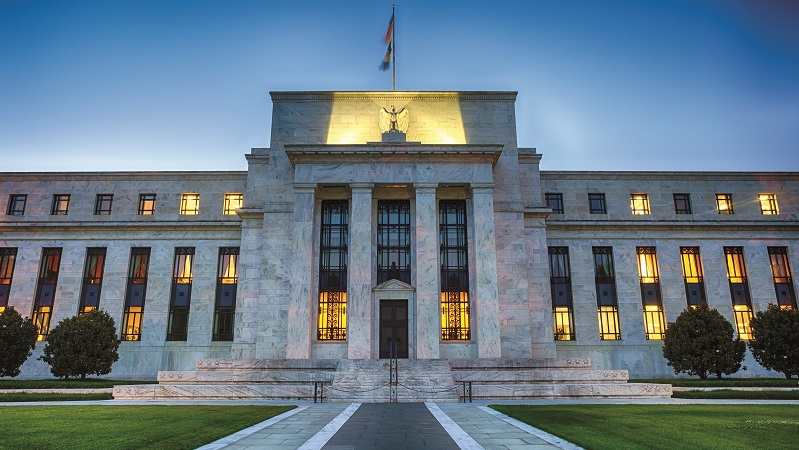Investors ploughing billions into unconstrained bond funds could get burnt if the US Federal Reserve continues to cut rates this year.
According to Last Word Research, the share of European investors intending to increase exposure to unconstrained bonds this year rose to 20% in Q4, up from 14% in Q3, the strongest increase for 2019. This follows more than £50bn net flows into the asset class from investors across Europe, according to Morningstar.
The share of investors intending to decrease allocations to these funds dropped slightly, to 7% from 8%.
Those maintaining their current level of unconstrained bonds dipped to 25% from 27%, while fewer investors are opting not to use them at all (48% vs 51% in Q3 – see chart below).

Source: Last Word Research
Unconstrained bond fund flows were positive every month of 2019, taking in €61bn (£51.7bn) and peaking in July when funds took in more than €8bn, according to Morningstar data. By comparison, government bond, corporate and high-yield bond funds attracted net inflows of €23bn, €42bn and €21bn respectively. Emerging market debt took in €41bn.

Source: Morningstar
Unconstrained bond funds not a one-stop shop
Flexible, unconstrained strategies have a reputation for navigating rising rates, Morningstar said in a research report titled Have Flexible-Bond Strategies Hit their Mark?, published on its website in January. But it warned against outsourcing duration calls to unconstrained bond managers.
The investment research house stated: “In the main, an unconstrained bond portfolio can be a useful aid if interest rates increase, but we think it should be a component, rather than the entirety, of a fixed-interest allocation.”
US asset manager Pimco, which manages the largest such fund in Europe, the Pimco GIS Income Fund with €72.2bn of assets, argued similarly that these strategies have merit when used in a complementary way.
It wrote in a blog in 2019: “We believe strategic exposure to these types of benchmark-agnostic or opportunistic bond strategies, if well designed, can be a beneficial complement to a core bond portfolio in periods of higher volatility, a characteristic of the late-cycle environment we’re facing today.”
Damage control for rising interest rates
When analysing Australian flexible fixed interest funds, Morningstar found these strategies “have generally handled periods of higher US government bond yields better than more-traditional index-relative vehicles”.
Flexible-bond portfolios almost universally limited the damage when US interest rates rose during 2018, with 10-year yields rising to 2.87% from 2.46% in January and February of that year, and similarly in April and September to October.
Almost all beat the Bloomberg AusBond Composite Bond and Bloomberg Barclays Global Aggregate indexes on average during these periods, Morningstar said.
Among the funds, the Bentham Global Income Fund and the Franklin Templeton Multisector Bond Fund fared best, returning on average 0.75% and 1.1% respectively, the analysis found.
Costly stance for low interest rate environment
Yet, given the current prevailing low interest rate environment, flexible fixed-interest portfolios have typically lagged bond indexes over medium- and longer-term horizons, Morningstar said.
“The flip side of shortening duration is the potential opportunity cost in carry [is] foregone, which can be amplified when maintaining an outright negative duration stance,” its analysts explained.
“While a capital gains payoff can be significant if yields rise, it can be costly to maintain this stance and take much time to pay dividends.”
They pointed to the difficulty in getting this call right, adding that “it’s easy to believe that the US will lift interest rates, but profiting on it is much harder.” The US Federal Reserve entered 2019 with interest rates at 2.25% to 2.5% but following three cuts, finished the year with a target rate of 1.5% and 1.75%.
Rates remained unchanged at the January meeting of the Federal Open Markets Committee but markets are currently pricing in two further cuts throughout 2020.
Morningstar cautioned a sensible approach to portfolio construction is needed to deal with unforeseen circumstances stemming from unpredictable investment markets.
Unconstrained funds can take too much directional risk
Pimco warns flexible mandates could run the danger of making too much use of the freedom that they are given without a limiting benchmark or framework.
It argued “flexible strategies should not be unpredictable”.
Some approaches, it said, could assume too much directional risk or focus too heavily on a single, predominant driver of performance.
“To be successful, we believe flexible strategies must strike the right balance between defensive positioning in volatile markets and the opportunistic pursuit of alpha over the long-term – all within a well-understood investment framework,” it suggested.
Pimco concluded that greater flexibility of “well-designed dynamic or opportunistic bond strategies” may help them to, potentially, capitalise on market shifts, compared to other traditional strategies.
In particular, during periods of market volatility, flexible strategies may:
- Make an overall portfolio more resilient by reducing directional risk, lowering beta exposure to duration and credit risk, and tilting toward relative value opportunities; and
- Seize opportunities that arise in volatile periods, providing debt capital to liquidity-hungry issuers when they are most in need (ie, when they are more willing to pay a premium to issue a bond).
For more insight on continental European investment, visit www.expertinvestoreurope.com










